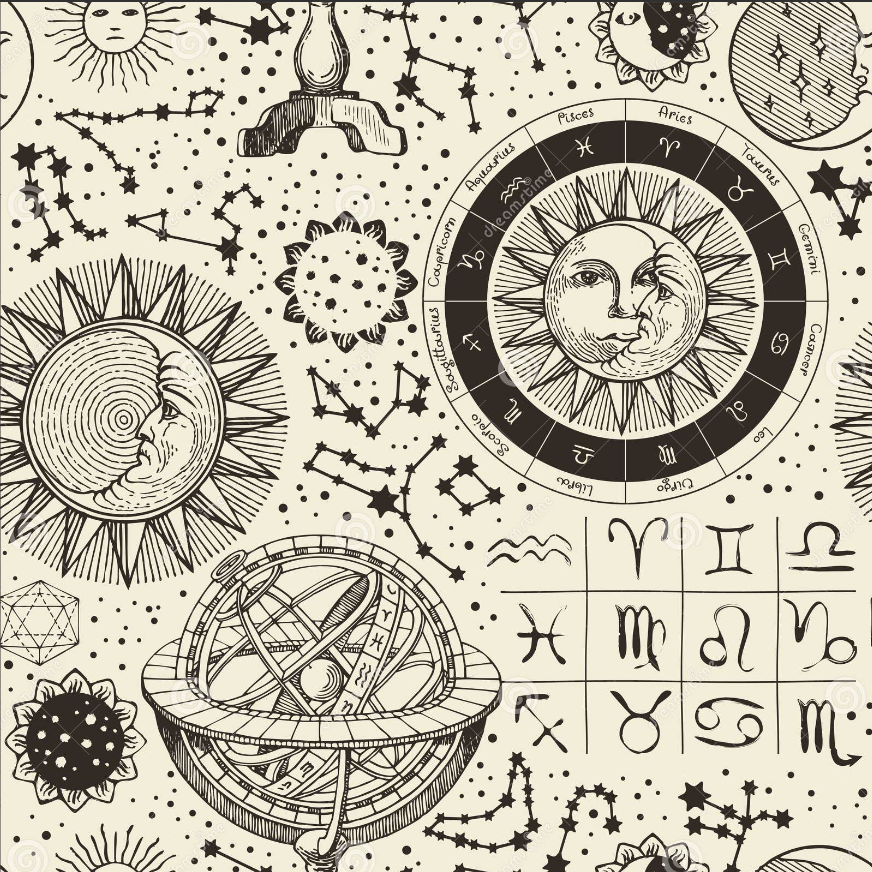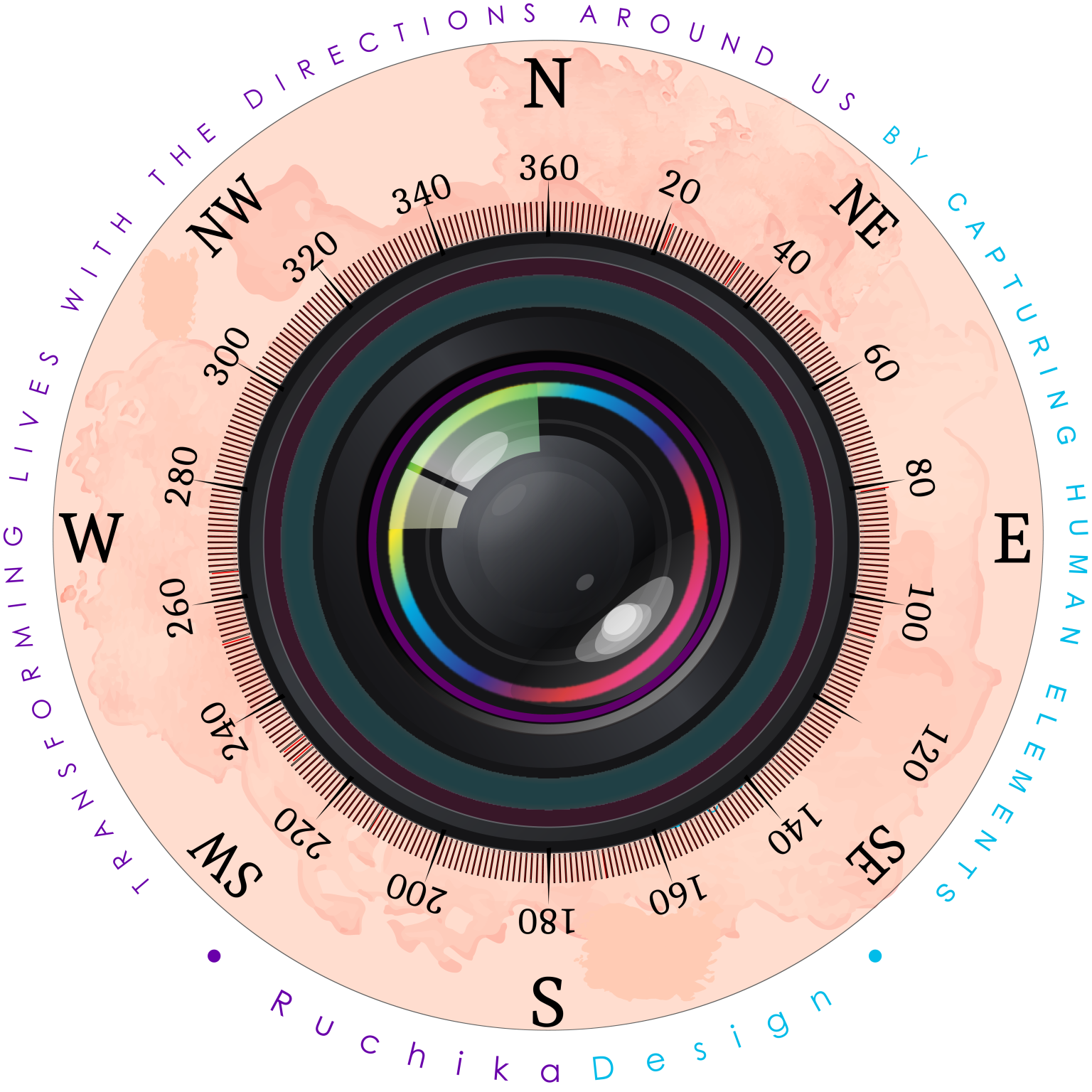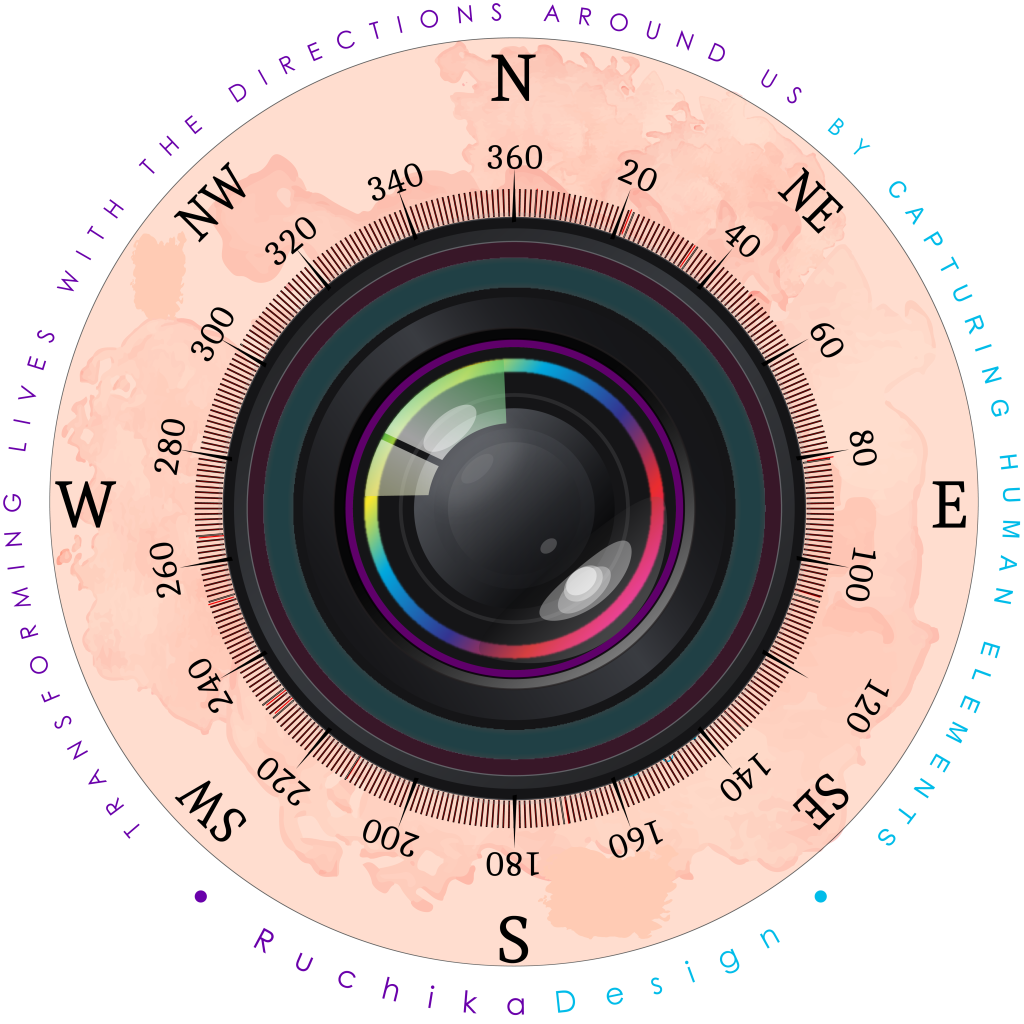
Astronomy Through Indian Scholars
Post by : Ruchika
Post date : 02/06/2024
While exploring the vast expanse of the sky and the intricacies of astronomy, one cannot help but be impressed by the ancient Hindu scholars who meticulously researched the planets and observed the minute behaviors of constellations and celestial bodies. The Vedas and Upanishads, some of the oldest sacred texts of Hinduism, offer a remarkable glimpse into this early astronomical knowledge.
The Vedas
The Vedas, composed around 1500-500 BCE, are a collection of hymns and religious texts that form the foundation of Hindu philosophy and rituals. They consist of four main collections: Rigveda, Yajurveda, Samaveda, and Atharvaveda. Each of these texts contains references to various aspects of astronomy.
Rigveda:
त उ देवाना दिव्य आ गमद्वीर्याणि तिष्ठन्ति विश्वा। प्रेषो न ते ददृशे सूर्यस्याक्षमधितिष्ठन्तम्॥
“They, those divine dazzling powers of the gods indeed stand all around. But the messenger did not show you, beyond the eyes of the sun.”
Celestial radiance of the gods surrounding all beings. It suggests that while these divine powers are ever-present, they are beyond the perception of ordinary human senses. Even though the messenger (possibly referring to the priest or intermediary) did not reveal these celestial truths beyond what can be seen with the physical eyes, they are nonetheless present and influential in the universe.
Nakshatras: The Rigveda introduces the concept of Nakshatras, or lunar mansions, which are 27 or 28 divisions of the sky along the Moon’s path. Each Nakshatra is associated with a specific star or group of stars and plays a crucial role in Vedic astrology and timekeeping.
Sun and Moon: The Rigveda frequently mentions the Sun (Surya) and Moon (Chandra), highlighting their significance for daily life and religious ceremonies. The precise movements of these celestial bodies were observed and recorded, underscoring their importance in our Vedic culture.
Yajurveda:
“अग्निर्वै विवस्वानारो रथं वेधमाधत्त। आश्वान्यज्यं सवर्चाः॥”
“अग्निर्वै विवस्वान” – Agni, the Vivifier,9vivisvan- (the stage of sun)
Solstices: This text refers to the winter and summer solstices, demonstrating an understanding of the Sun’s yearly movement across the sky. These solstices were vital for determining the timing of agricultural and religious events.
Eclipses: The Yajurveda contains prayers and rituals associated with solar and lunar eclipses, indicating an awareness of these celestial phenomena and their impact on human life.
The Chandogya Upanishad,
Chapter 3, Section 19, Verses 1-2:
Verse 1:
तदेतत्त्रयोदशकलाः सोम्येन सह भवन्ति।
स एवासौ सोम्य त्रिंशत्तमो वा एष सतोद्गात्सत्पुरुषो गतोऽभूद्देवानां यथासंकल्पं परिशुद्धो भवति॥
Verse 2:
तत्रैक एव महत्तमः पुरुषः सः पुरुष एव समवतिष्ठत एकस्मिन्नन्तराक्न्यामनु दधाति स्वाहा॥
Verse 1: “O good-looking one (Somya), these thirty-three divine powers together with Soma become yours. He, indeed, O good-looking one (Somya), who has reached the thirty-third, becomes united with Sata. Having become united with Sat, he becomes endowed with brilliance, in accordance with his highest resolve; he becomes as it were pure, bright, and sinless, like a divinity.” This verse discusses the attainment of divine powers through the ritual consumption of Soma, leading to purity and enlightenment.
Verse 2: “There, indeed, in the highest space, there is this most excellent Person. He alone, indeed, O good-looking one, having risen above, remains there, having placed the same in the middle, as an oblation into the fire, with ‘Swaha’.” This verse describes the highest state of consciousness where the supreme being resides, beyond all limitations and divisions, symbolized by the offering of oblation into the sacred fire with the utterance of ‘Swaha’.
This verse could symbolize the concept of a central cosmic axis or center of the world , a central point around which the celestial bodies revolve or the universe is structured. The imagery of offering oblations into this central axis could signify the harmonious alignment of cosmic forces or the reverence for the central cosmic order.
Brihadaranyak Upanishad:
Cosmology: The Brihadaranyak Upanishad explores the creation and structure of the universe, often linking cosmic principles to human existence and spirituality. It reflects an understanding of the interconnectedness of all things. For instance, Brihadaranyaka Upanishad 3.8.9-10 discusses the creation and the role of the Sun and Moon.
ततेजो भास्वर्यं पुरुषं नमस्यात्।
तं नमस्यन्ते सर्वे देवाः।
तं वरेण्यं प्रणमन्ति यथा पूर्वं देवाः।
तं हैतानि नामानि विद्यान्ति।
This verse describes the worship of the radiant person, who is revered by all gods. It emphasizes his supreme status and the reverence accorded to him by the divine beings.
Celestial phenomena. The “radiant person” represents the sun, the source of light and energy in the cosmos. Celestial bodies, such as stars and planets, “bow down” to the sun in the sense that they revolve around it or are influenced by its gravitational force. The term “varishtha” or “most revered” signifies the central and indispensable role of the sun in the celestial hierarchy. The mention of “names” could refer to the various appellations or attributes of the sun in different cultures or astronomical contexts. Overall, the verse underscores the significance of the sun in the cosmic order and its reverence by other celestial bodies.
The study of astronomy in the Vedas and Upanishads reveals a culture deeply connected to the cosmos. Ancient Indian scholars closely observed the sky, noting the movements of the Sun, Moon, planets, and stars. Through hymns, rituals, and philosophical texts, these scriptures illustrate a profound understanding of celestial rhythms and their impact on human life.
Later Developments
The foundational knowledge in the Vedas and Upanishads paved the way for later Indian astronomers such as Aryabhata and Varahamihira. Their works, like the Aryabhatiya and Brihat Samhita, expanded on these early ideas and introduced more advanced mathematical and observational techniques. These scholars continued the tradition of meticulous observation and detailed recording of celestial phenomena, further enriching the field of astronomy.
Aryabhata was an ancient Indian mathematician and astronomer who lived around the 5th century CE. He is considered one of the greatest mathematicians and astronomers of ancient India.
Aryabhata’s most famous work is the Aryabhatiya, a Sanskrit astronomical studies that contains mathematical and astronomical theories
Aryabhata proposed a heliocentric model of the solar system, where the Earth rotates on its axis and orbits the Sun. He accurately calculated the length of the solar year and explained the causes of lunar and solar eclipses.
Timekeeping: Aryabhata devised methods for calculating time, including determining the duration of day and night and the positions of celestial bodies. Aryabhata’s work had a profound impact on the development of mathematics and astronomy in India and beyond. His ideas and discoveries influenced later mathematicians and astronomers, and his legacy continues to be celebrated in the field of science.
Astronomy holds a significant place in Hindu sciences, deeply intertwined with spirituality, philosophy, and daily life. Ancient Hindu texts, such as the Vedas, Upanishads, and Puranas, contain rich astronomical knowledge dating back thousands of years. These texts not only describe the movements of celestial bodies but also explore the cosmic order, the concept of time, and the interplay between the macrocosm and microcosm.
In Hindu cosmology, the universe is perceived as cyclical, with periods of creation, preservation, and dissolution. Celestial phenomena such as eclipses, planetary positions, and the motion of stars are viewed as auspicious or inauspicious, influencing religious rituals, agriculture, and societal activities.Astrology, a vital aspect of Hindu sciences, uses astronomical observations to interpret cosmic influences on human life and destiny. The positioning of planets at the time of birth is believed to influence personality traits, events, and fortunes.
Hindu sciences continue to evolve, integrating traditional knowledge with modern scientific advancements. Institutions like the Indian Institute of Astrophysics and the Indian Space Research Organization (ISRO) carry forward the legacy of ancient astronomers, contributing to global astronomical research and space exploration.
Astronomy Through Indian Scholars
Post by : Ruchika
Post date : 02/06/2024
While exploring the vast expanse of the sky and the intricacies of astronomy, one cannot help but be impressed by the ancient Hindu scholars who meticulously researched the planets and observed the minute behaviors of constellations and celestial bodies. The Vedas and Upanishads, some of the oldest sacred texts of Hinduism, offer a remarkable glimpse into this early astronomical knowledge.
The Vedas
The Vedas, composed around 1500-500 BCE, are a collection of hymns and religious texts that form the foundation of Hindu philosophy and rituals. They consist of four main collections: Rigveda, Yajurveda, Samaveda, and Atharvaveda. Each of these texts contains references to various aspects of astronomy.
Rigveda:
त उ देवाना दिव्य आ गमद्वीर्याणि तिष्ठन्ति विश्वा। प्रेषो न ते ददृशे सूर्यस्याक्षमधितिष्ठन्तम्॥
“They, those divine dazzling powers of the gods indeed stand all around. But the messenger did not show you, beyond the eyes of the sun.”
Celestial radiance of the gods surrounding all beings. It suggests that while these divine powers are ever-present, they are beyond the perception of ordinary human senses. Even though the messenger (possibly referring to the priest or intermediary) did not reveal these celestial truths beyond what can be seen with the physical eyes, they are nonetheless present and influential in the universe.
Nakshatras: The Rigveda introduces the concept of Nakshatras, or lunar mansions, which are 27 or 28 divisions of the sky along the Moon’s path. Each Nakshatra is associated with a specific star or group of stars and plays a crucial role in Vedic astrology and timekeeping.
Sun and Moon: The Rigveda frequently mentions the Sun (Surya) and Moon (Chandra), highlighting their significance for daily life and religious ceremonies. The precise movements of these celestial bodies were observed and recorded, underscoring their importance in our Vedic culture.
Yajurveda:
“अग्निर्वै विवस्वानारो रथं वेधमाधत्त। आश्वान्यज्यं सवर्चाः॥”
“अग्निर्वै विवस्वान” – Agni, the Vivifier,9vivisvan- (the stage of sun)
Solstices: This text refers to the winter and summer solstices, demonstrating an understanding of the Sun’s yearly movement across the sky. These solstices were vital for determining the timing of agricultural and religious events.
Eclipses: The Yajurveda contains prayers and rituals associated with solar and lunar eclipses, indicating an awareness of these celestial phenomena and their impact on human life.
The Chandogya Upanishad,
Chapter 3, Section 19, Verses 1-2:
Verse 1:
तदेतत्त्रयोदशकलाः सोम्येन सह भवन्ति।
स एवासौ सोम्य त्रिंशत्तमो वा एष सतोद्गात्सत्पुरुषो गतोऽभूद्देवानां यथासंकल्पं परिशुद्धो भवति॥
Verse 2:
तत्रैक एव महत्तमः पुरुषः सः पुरुष एव समवतिष्ठत एकस्मिन्नन्तराक्न्यामनु दधाति स्वाहा॥
Verse 1: “O good-looking one (Somya), these thirty-three divine powers together with Soma become yours. He, indeed, O good-looking one (Somya), who has reached the thirty-third, becomes united with Sata. Having become united with Sat, he becomes endowed with brilliance, in accordance with his highest resolve; he becomes as it were pure, bright, and sinless, like a divinity.” This verse discusses the attainment of divine powers through the ritual consumption of Soma, leading to purity and enlightenment.
Verse 2: “There, indeed, in the highest space, there is this most excellent Person. He alone, indeed, O good-looking one, having risen above, remains there, having placed the same in the middle, as an oblation into the fire, with ‘Swaha’.” This verse describes the highest state of consciousness where the supreme being resides, beyond all limitations and divisions, symbolized by the offering of oblation into the sacred fire with the utterance of ‘Swaha’.
This verse could symbolize the concept of a central cosmic axis or center of the world , a central point around which the celestial bodies revolve or the universe is structured. The imagery of offering oblations into this central axis could signify the harmonious alignment of cosmic forces or the reverence for the central cosmic order.
Brihadaranyak Upanishad:
Cosmology: The Brihadaranyak Upanishad explores the creation and structure of the universe, often linking cosmic principles to human existence and spirituality. It reflects an understanding of the interconnectedness of all things. For instance, Brihadaranyaka Upanishad 3.8.9-10 discusses the creation and the role of the Sun and Moon.
ततेजो भास्वर्यं पुरुषं नमस्यात्।
तं नमस्यन्ते सर्वे देवाः।
तं वरेण्यं प्रणमन्ति यथा पूर्वं देवाः।
तं हैतानि नामानि विद्यान्ति।
This verse describes the worship of the radiant person, who is revered by all gods. It emphasizes his supreme status and the reverence accorded to him by the divine beings.
Celestial phenomena. The “radiant person” represents the sun, the source of light and energy in the cosmos. Celestial bodies, such as stars and planets, “bow down” to the sun in the sense that they revolve around it or are influenced by its gravitational force. The term “varishtha” or “most revered” signifies the central and indispensable role of the sun in the celestial hierarchy. The mention of “names” could refer to the various appellations or attributes of the sun in different cultures or astronomical contexts. Overall, the verse underscores the significance of the sun in the cosmic order and its reverence by other celestial bodies.
The study of astronomy in the Vedas and Upanishads reveals a culture deeply connected to the cosmos. Ancient Indian scholars closely observed the sky, noting the movements of the Sun, Moon, planets, and stars. Through hymns, rituals, and philosophical texts, these scriptures illustrate a profound understanding of celestial rhythms and their impact on human life.
Later Developments
The foundational knowledge in the Vedas and Upanishads paved the way for later Indian astronomers such as Aryabhata and Varahamihira. Their works, like the Aryabhatiya and Brihat Samhita, expanded on these early ideas and introduced more advanced mathematical and observational techniques. These scholars continued the tradition of meticulous observation and detailed recording of celestial phenomena, further enriching the field of astronomy.
Aryabhata was an ancient Indian mathematician and astronomer who lived around the 5th century CE. He is considered one of the greatest mathematicians and astronomers of ancient India.
Aryabhata’s most famous work is the Aryabhatiya, a Sanskrit astronomical studies that contains mathematical and astronomical theories
Aryabhata proposed a heliocentric model of the solar system, where the Earth rotates on its axis and orbits the Sun. He accurately calculated the length of the solar year and explained the causes of lunar and solar eclipses.
Timekeeping: Aryabhata devised methods for calculating time, including determining the duration of day and night and the positions of celestial bodies. Aryabhata’s work had a profound impact on the development of mathematics and astronomy in India and beyond. His ideas and discoveries influenced later mathematicians and astronomers, and his legacy continues to be celebrated in the field of science.
Astronomy holds a significant place in Hindu sciences, deeply intertwined with spirituality, philosophy, and daily life. Ancient Hindu texts, such as the Vedas, Upanishads, and Puranas, contain rich astronomical knowledge dating back thousands of years. These texts not only describe the movements of celestial bodies but also explore the cosmic order, the concept of time, and the interplay between the macrocosm and microcosm.
In Hindu cosmology, the universe is perceived as cyclical, with periods of creation, preservation, and dissolution. Celestial phenomena such as eclipses, planetary positions, and the motion of stars are viewed as auspicious or inauspicious, influencing religious rituals, agriculture, and societal activities.Astrology, a vital aspect of Hindu sciences, uses astronomical observations to interpret cosmic influences on human life and destiny. The positioning of planets at the time of birth is believed to influence personality traits, events, and fortunes.
Hindu sciences continue to evolve, integrating traditional knowledge with modern scientific advancements. Institutions like the Indian Institute of Astrophysics and the Indian Space Research Organization (ISRO) carry forward the legacy of ancient astronomers, contributing to global astronomical research and space exploration.



